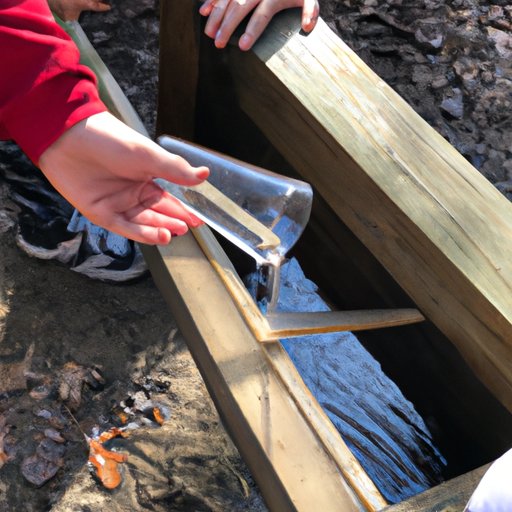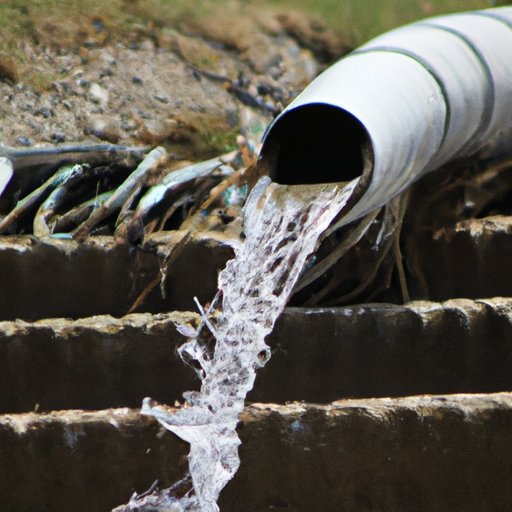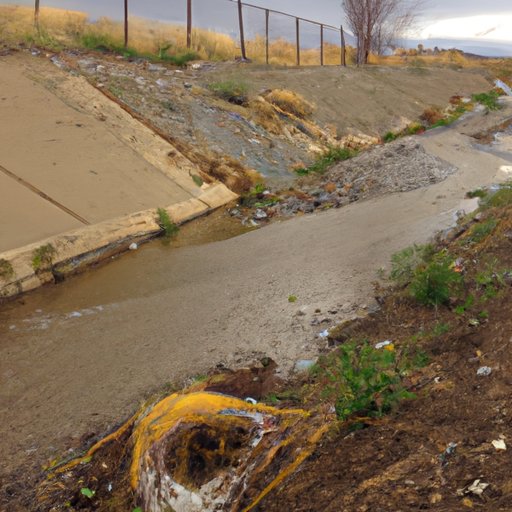Introduction
Runoff is an important part of the water cycle, and it plays a vital role in the environment. Runoff is defined as the flow of water over land surfaces, such as fields and lawns, or bodies of water, such as rivers and streams. It is the process by which precipitation, such as rain, snow, or hail, is collected and transported from higher elevations to lower ones.
The process of runoff is relatively simple: when precipitation falls onto a surface, it accumulates until it reaches a certain point, and then it flows downhill. In some cases, the water will evaporate before it has a chance to reach its destination; in other cases, it will be absorbed into the ground. In either case, the water eventually makes its way to a body of water, where it can be used for agricultural, recreational, or industrial purposes.

Exploring the Science of Runoff
Runoff is an essential part of the natural water cycle, and it helps maintain healthy ecosystems. When runoff occurs, it carries nutrients and sediment from higher elevations to lower ones, which helps replenish soil fertility and replenish water sources. It also helps to regulate water temperature and prevent flooding.
However, runoff can also have negative impacts on the environment. When runoff occurs, it can carry pollutants from higher elevations to lower ones, which can contaminate water sources and cause environmental damage. Additionally, runoff can cause erosion, which can lead to loss of soil fertility and reduced crop yields.
A Closer Look at Runoff Pollution
Runoff pollution is a major environmental problem, as it can cause significant damage to water sources, ecosystems, and human health. The main causes of runoff pollution are agricultural activities, urban development, and industrial activities. Agricultural activities, such as the use of fertilizers and pesticides, can lead to the contamination of water sources with hazardous chemicals. Urban development, such as the construction of roads and buildings, can increase the amount of runoff, leading to increased erosion and sedimentation. Industrial activities can release toxic substances into the environment, which can then be carried by runoff to water sources.
The effects of runoff pollution can be severe. Contaminated water sources can lead to health problems for humans and animals, including gastrointestinal illnesses, skin rashes, and respiratory issues. Runoff pollution can also lead to algal blooms, which can deplete oxygen levels in water sources and create dead zones. Additionally, runoff can cause eutrophication, which can reduce the biodiversity of aquatic ecosystems.

Mitigating the Risk of Runoff
Fortunately, there are steps that can be taken to reduce the risk of runoff pollution. For example, farmers can reduce their use of fertilizers and pesticides, and they can implement best practices such as crop rotation and cover cropping. Urban developers can install permeable pavement and green infrastructure, such as rain gardens and bioswales, to reduce the amount of runoff. Additionally, industries can employ best practices to reduce the amount of pollutants they release into the environment.
There are also examples of successful mitigation efforts. For instance, New York City implemented a stormwater management program in the early 2000s, which has been successful in reducing runoff and improving water quality. Additionally, Portland, Oregon has implemented green infrastructure projects, such as rain gardens and bioswales, to reduce the amount of runoff and improve water quality.
Conclusion
Runoff is an essential part of the natural water cycle, but it can also have negative impacts on the environment. Runoff pollution can lead to contamination of water sources, health problems, and damage to ecosystems. Fortunately, there are steps that can be taken to reduce the risk of runoff pollution, such as reducing fertilizer and pesticide use, installing permeable pavement, and implementing green infrastructure projects. Examples of successful mitigation efforts, such as those in New York City and Portland, Oregon, show that it is possible to reduce the impact of runoff pollution and protect our water resources.
It is important to remember that runoff is not just a local issue; it affects us all. Everyone has a role to play in reducing runoff pollution and protecting our water resources. By taking steps to reduce runoff pollution and implementing effective mitigation strategies, we can ensure that our water sources remain safe and healthy for generations to come.
(Note: Is this article not meeting your expectations? Do you have knowledge or insights to share? Unlock new opportunities and expand your reach by joining our authors team. Click Registration to join us and share your expertise with our readers.)
